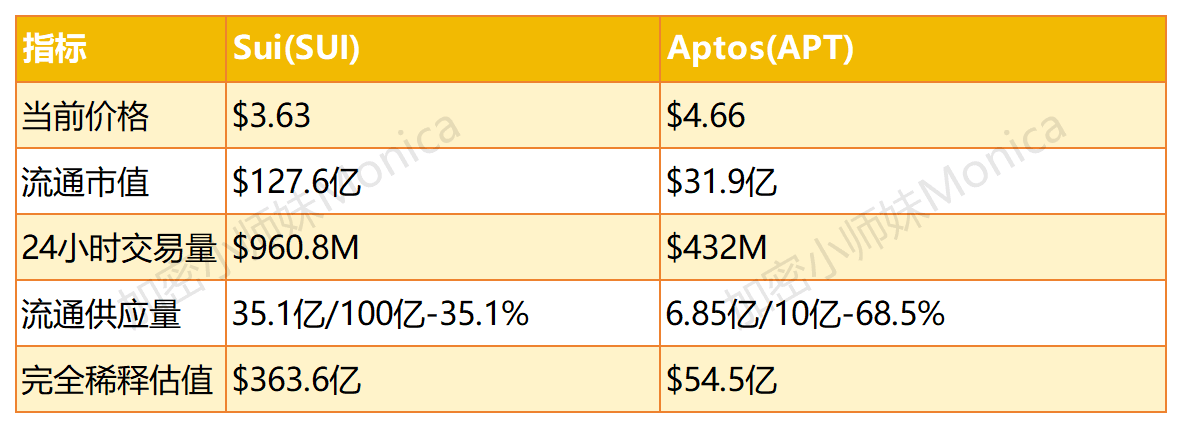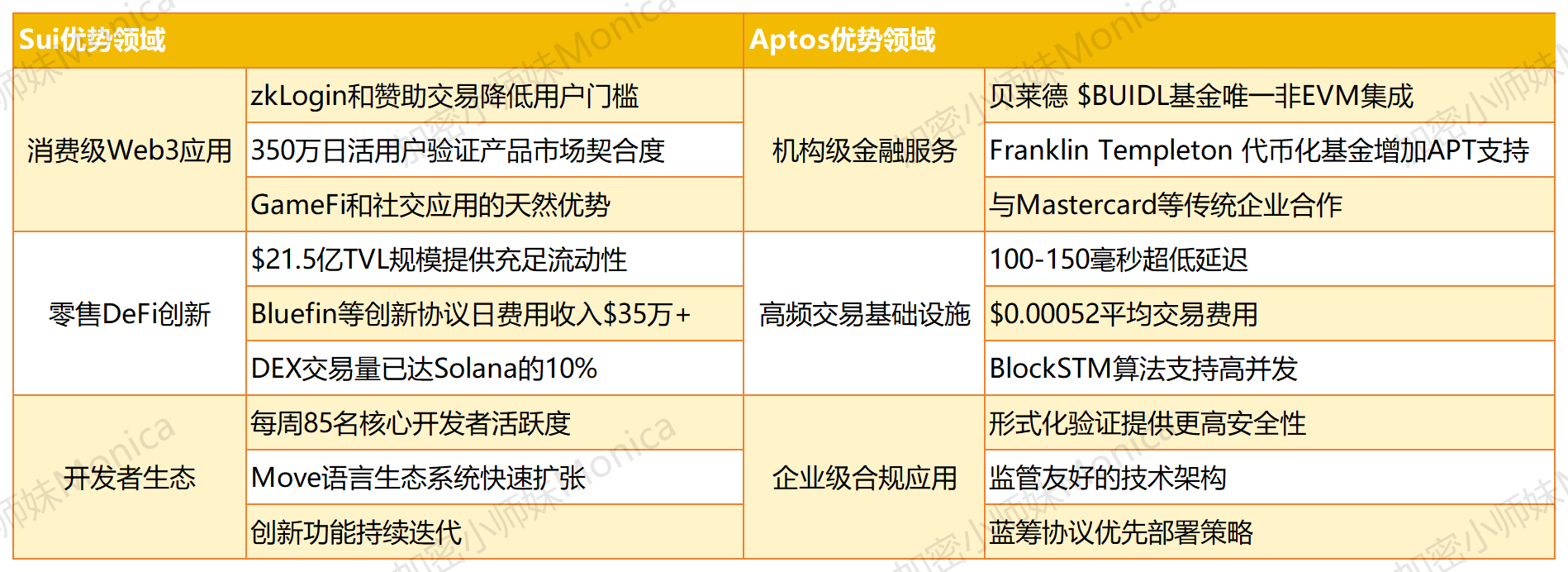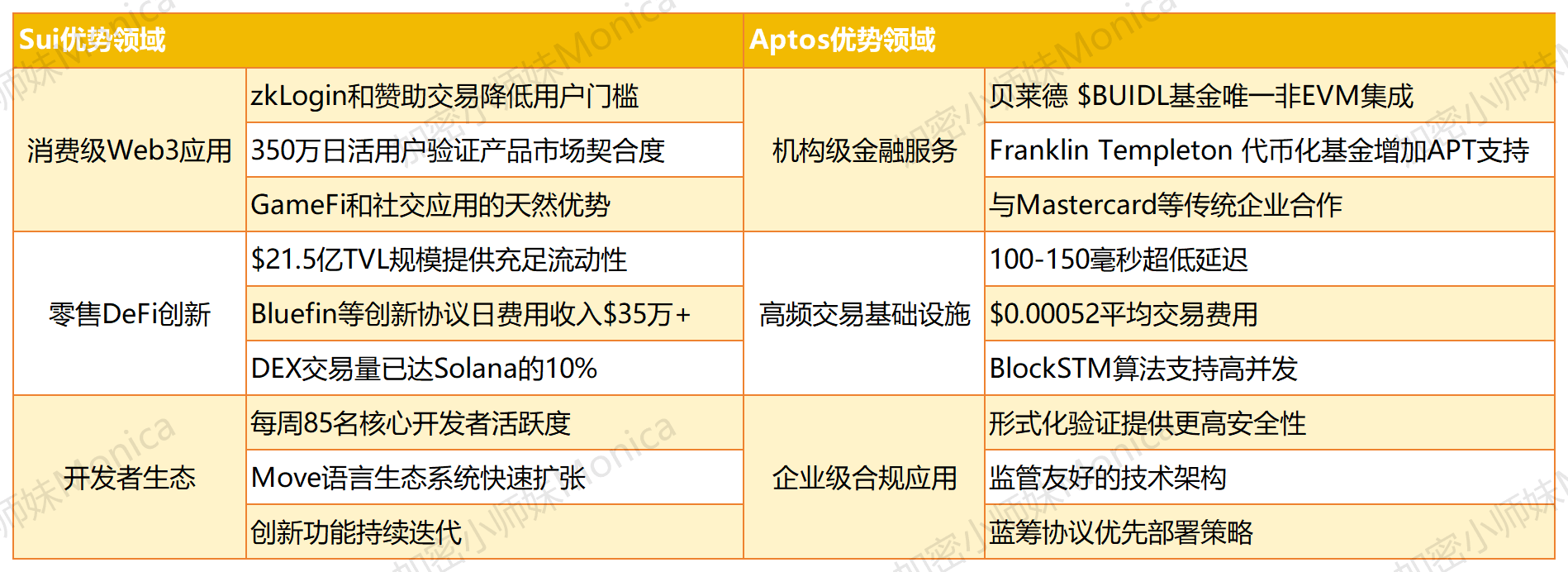There is a lot of debate online regarding the two leading projects in the Move ecosystem; one could say that from the moment they were born, they were destined to be 'competitors.'
It is now evident that Sui has taken a shortcut, gaining stronger momentum. As an investment target, we must first adhere to the principle of 'Do not invest if you do not understand,' which is the intention behind writing this article.
First of all, the Solidity language is a widely used language for building various types of smart contracts on Ethereum, with a large developer community; whereas the Move language has obvious advantages in resource handling, security, and modularity, making it the most suitable language for writing smart contracts, especially for DeFi financial products.
Once, Aptos became the leader of the Move ecosystem with $350 million in funding and a rich ecosystem, while Sui caught up with $335 million in funding and steady technological development, being referred to as the twin stars of the Move ecosystem alongside Aptos.
Nowadays, SUI has become one of the most active Layer 1s with a daily transaction volume of 10.9 million, while Aptos, in comparison, appears somewhat dim, having shifted from being the champion to a challenger.
Today, I would like to summarize the similarities and differences between Sui and Aptos, both being Move-based public chains, and analyze the factors behind Sui's rise, as well as the potential for Aptos's future development.
1. First, the basic data:

2. Different designs of token economics:
Different supply levels are determined by token economics:
SUI adopts a large supply + long-term unlocking model (10 billion total supply, unlocking until 2030), aiming to support high-frequency microtransactions and large-scale ecosystem expansion;
APT adopts a small supply + fast unlocking model (1 billion total supply, linear release over 4 years), pursuing scarcity premium and elitist positioning, with a focus on traditional financial-grade staking yield design.

3. Different Development Routes:
The design of token economics also reflects the choices made in the development routes of Sui and Aptos to some extent:
Sui follows an "eco-first" route, focusing on user experience innovation and the expansion of DeFi scale;
Aptos follows an "institution-first" route, emphasizing the layout of traditional financial infrastructure and the introduction of blue-chip protocols.

Analyzing the advantage areas of both: it can be seen that the Sui ecosystem is more focused on user and developer experience, investing heavily in applications.
In contrast, Aptos focuses more on providing enterprise-level services, even having somewhat stringent demands for quality. In fact, although both are Move-based public chains, Sui and Aptos do not have a direct zero-sum competitive relationship.
In my view, the challenges Aptos will face in the near future, apart from the continued unlocking pressure, also include a relatively small user base and TVL scale, which requires Aptos to offer a more diverse range of protocol types and a richer ecosystem to support user growth.



